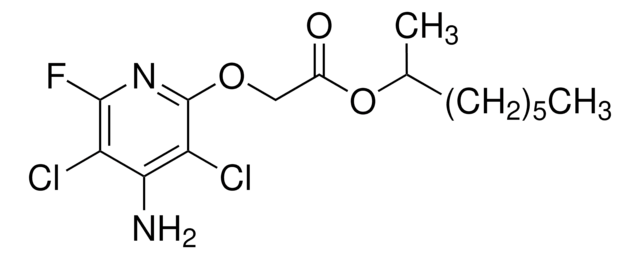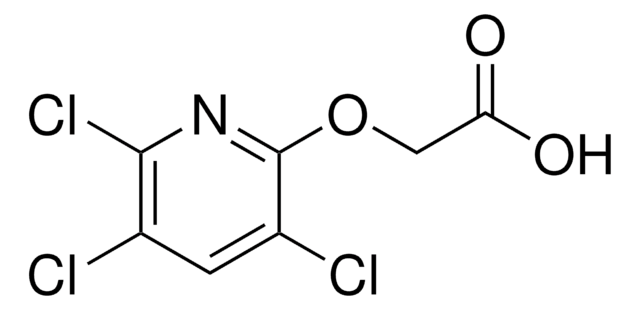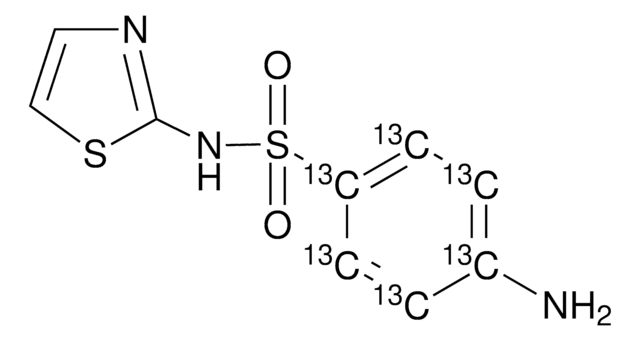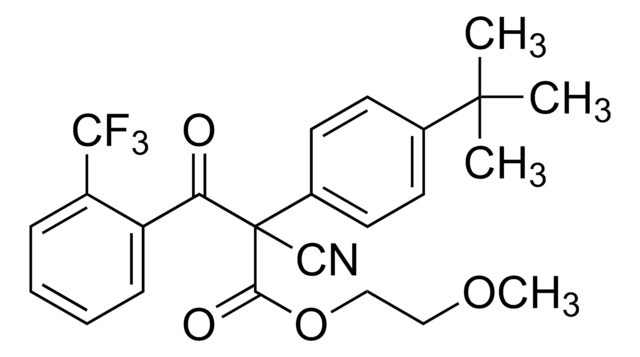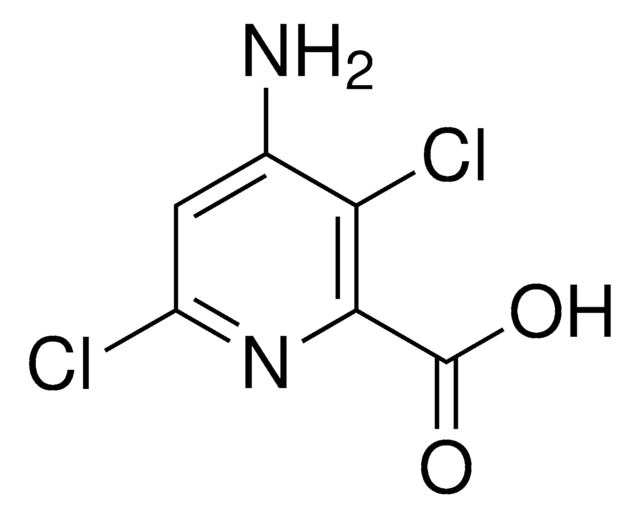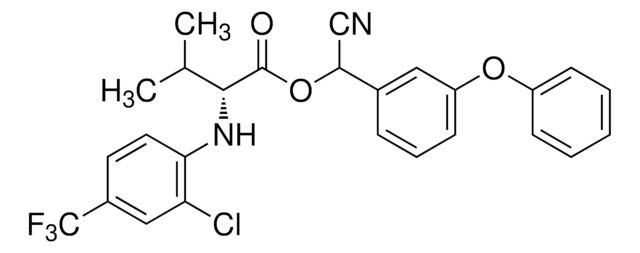45758
Fluroxypyr
PESTANAL®, analytical standard
Synonym(s):
2-[(4-Amino-3,5-dichloro-6-fluoro-2-pyridinyl)oxy]acetic acid, 4-Amino-3,5-dichloro-6-fluoro-2-pyridyloxyacetic acid
About This Item
Recommended Products
grade
analytical standard
product line
PESTANAL®
shelf life
limited shelf life, expiry date on the label
application(s)
agriculture
environmental
format
neat
SMILES string
Nc1c(Cl)c(F)nc(OCC(O)=O)c1Cl
InChI
1S/C7H5Cl2FN2O3/c8-3-5(11)4(9)7(12-6(3)10)15-1-2(13)14/h1H2,(H2,11,12)(H,13,14)
InChI key
MEFQWPUMEMWTJP-UHFFFAOYSA-N
Looking for similar products? Visit Product Comparison Guide
Related Categories
Application
- Impact of herbicide runoff: Research compares runoff losses and toxicity between residual and knockdown herbicides, including Fluroxypyr, when applied to sugarcane fields, demonstrating significant differences relative to traditional treatments such as Diuron. This study underscores the importance of selecting appropriate herbicide treatments for effective weed management while minimizing environmental impact (Silburn et al., 2023).
- Herbicide resistance and management: A study focused on Florasulam-resistant flixweed in North China highlights the potential role of alternative herbicides, including Fluroxypyr, for managing resistant weed populations. The research provides insights into herbicide selectivity and efficacy, aiding in the development of more effective weed management strategies (Wang et al., 2021).
- Herbicide pollution assessment: Utilizing a multi-dimensional approach, this study assesses herbicide pollution in catchment areas, discussing the implications of Fluroxypyr among other herbicides. It focuses on the ecological consequences of herbicide use and the necessity for accurate pollution assessment techniques to ensure environmental safety (Khan et al., 2020).
Legal Information
Hazard Statements
Precautionary Statements
Hazard Classifications
Aquatic Chronic 3
Storage Class Code
11 - Combustible Solids
WGK
WGK 2
Flash Point(F)
Not applicable
Flash Point(C)
Not applicable
Personal Protective Equipment
Certificates of Analysis (COA)
Search for Certificates of Analysis (COA) by entering the products Lot/Batch Number. Lot and Batch Numbers can be found on a product’s label following the words ‘Lot’ or ‘Batch’.
Already Own This Product?
Find documentation for the products that you have recently purchased in the Document Library.
Customers Also Viewed
Our team of scientists has experience in all areas of research including Life Science, Material Science, Chemical Synthesis, Chromatography, Analytical and many others.
Contact Technical Service